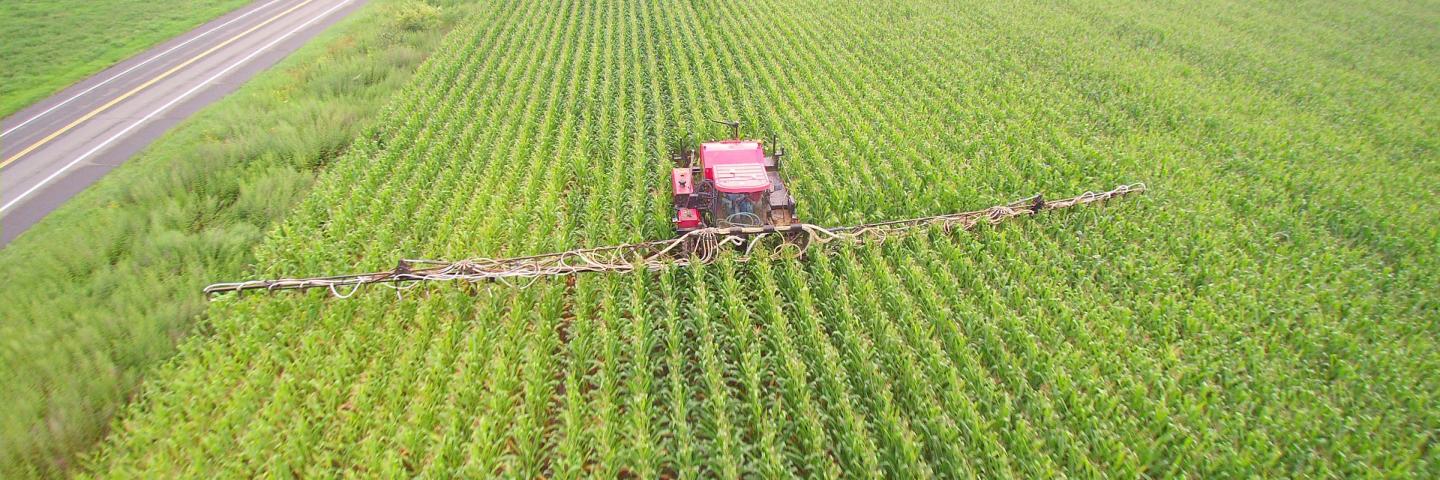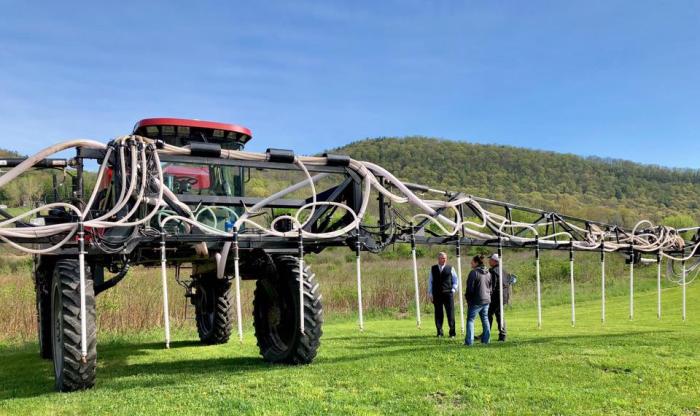
Conservation Innovation Grants Completed in FY2022 in Pennsylvania
The following Pennsylvania CIG agreements concluded in FY 2022.
Mid-Atlantic 4R Nutrient Stewardship Association:
Utilizing Nitrogen Modeling to Determined Soil Health Contributions to Nitrogen Fertility (funded in 2020) – This project studied nutrient management plan implementation in conjunction with soil health practices on 22 farms with the goal of demonstrating that nitrogen modeling tools should be considered as a Precision Ag Technology under CSP enhancement E590B to reduce risks of nutrient loss to surface water.
A comparison of the Granular Agronomy Nitrogen Service model (the crop model) to the mass balance nitrogen calculation identified a 10% improvement of nitrogen use efficiency on acres used the model compared to acres utilizing a mass balance calculation. A crop model can quantify soil nitrogen contributions from soil, manure, and fertilizer and can track nitrogen loss through leaching, immobilization, volatilization, and denitrification based on soil characteristics and user inputs. The process of working with the model platform provided an opportunity to talk with farmers about nutrient loss pathways on the farm. Challenges of both the currently accepted mass balance calculation and nitrogen modeling platforms include their inherent limits to reduce nitrogen loss, thereby improving water quality. Soil conditions, weather conditions, and other uncontrollable factors are ever-present that may increase the risk of inefficient nitrogen use and nitrogen loss.
There are several key considerations for the use of models. 1) The accuracy of the information entered is key for the accuracy of the models’ outputs. 2) While models can’t predict weather, they can simulate what could likely happen. 3) Models are flexible with management because they simulate crop growth and conversion and movement of nutrients from various sources. 4) In addition, models simulate subprocesses including nitrogen loss pathways like nitrification, denitrification, leaching, mineralization, volatilization, and immobilization. 5) The reports from a model can foster discussion and potential changes to management.
Bradford County Conservation District:
Demonstrate that Alley Cropping Can Contribute to the Financial and Conservation Success of Arable Farm Operations. (funded in 2018) – Cover crops provide important conservation and production benefits when integrated in annual cropping systems. While cover cropping is increasing in popularity, adoption remains below 40% in PA. One challenge to cover cropping implementation includes poor establishment following late harvested crops. Because of limited time before winter to establish cover crops successfully, Penn State is researching ways to establish the cover crop into the standing cash crop, giving time for the cover crop to establish before cash grain harvest. The practice, known as interseeding, is not widely adopted. The aim of this CIG was to promote the adoption of interseeding cover crops in short growing season areas of Pennsylvania.

Bradford County Conservation District (BCCD) demonstrated cover crop interseeding technology in Pennsylvania’s northern counties. The shorter growing season and climate conditions in this part of the state make it difficult for farmers to establish cover crops following grain harvest. BCCD utilized a newly acquired interseeder to plant cover crops on over 4,000 acres on 67 farm sites in northern Pennsylvania and southern New York Counties. These demonstrations provided farmers in the area a first-hand look at the new machine and the results of the seedings. Results were mixed across the area due to weather variability; however, plans to continue interseeding in the area are moving forward for 2023.

